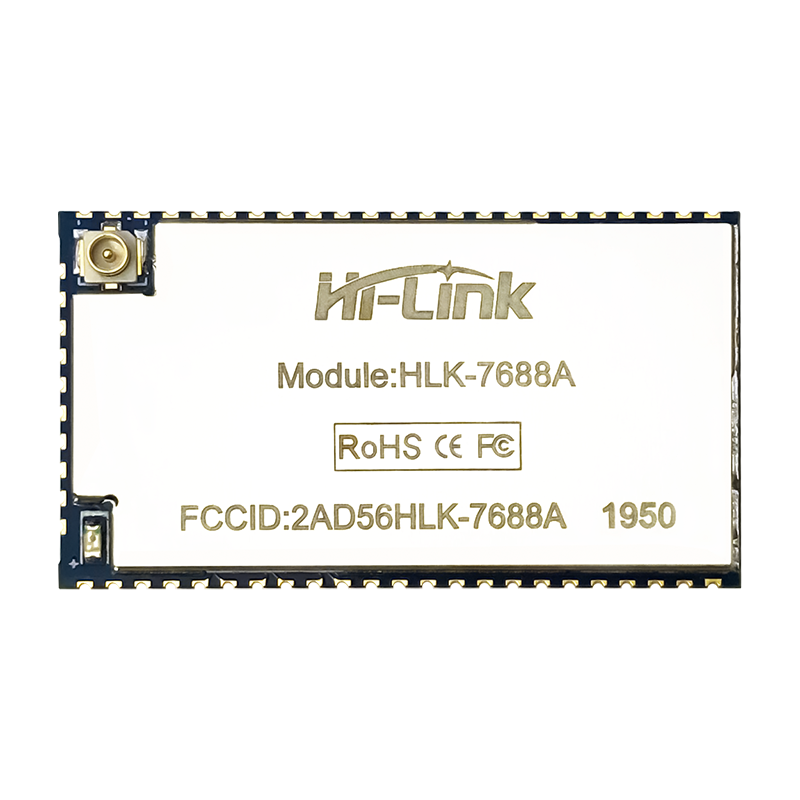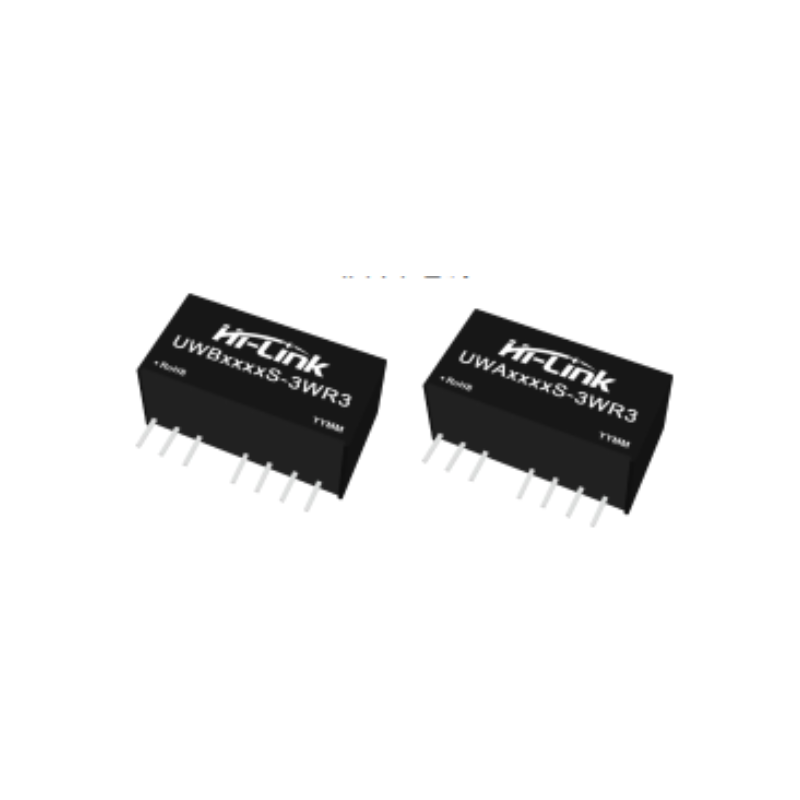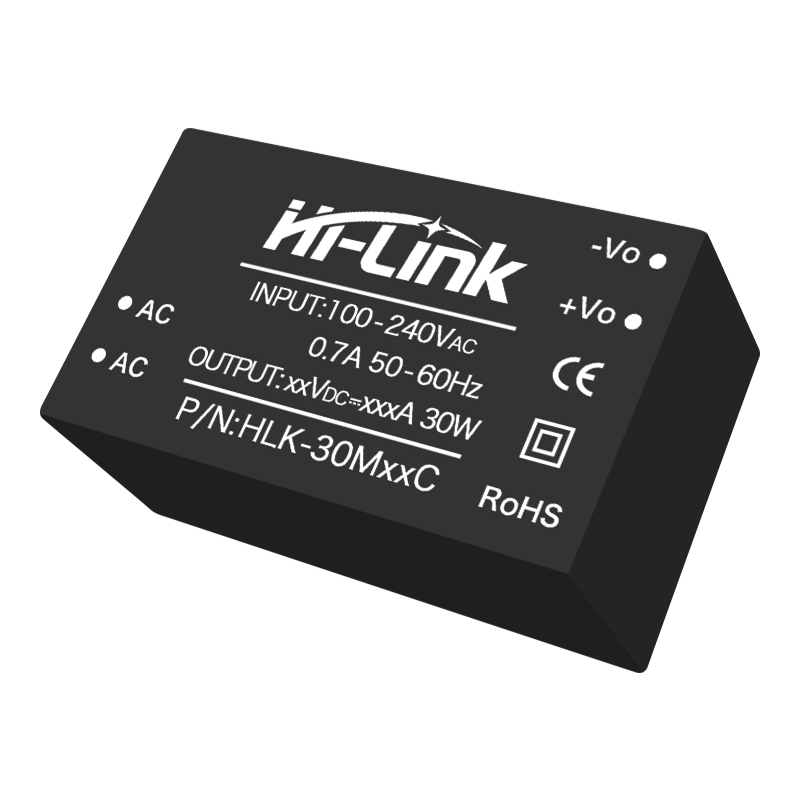





Hotspots/pain points/viewpoints are connected, and the context of the IOT events is under control
1.What is wifi?
The so-called Wi-Fi, the full name of Wireless Fidelity, is actually another name for IEEE 802.11 . It is organized by an organization called the "Wireless Ethernet Compatibility Alliance" (WECA)Published industry terms,Chinese translated as "wireless compatible certification". It is a short-range wireless transmission technology that can support radio signals for Internet access within a range of hundreds of feet. With the development of technology, and IEEE 802.11a andThe emergence of standards such as IEEE 802.11g, now IEEE 802.11This standard has been collectively referred to as Wi-Fi. From an application level, to use Wi-Fi, users must first have a Wi-Fi compatible client device.
Wi-Fi is an enabling technology that helps users access email, Web, and streaming media. It provides users with wireless broadband Internet access. At the same time, it is also a fast and convenient way to surf the Internet at home, in the office or on the go.Places that can access Wi-Fi networks are called hotspots. Wi-Fi or 802.11b works in the 2.4Ghz frequency band and supports speeds up to 11Mbps. There are also two 802.11 space protocols, including (a) and (g).They are also publicly used,But 802.11b is most commonly used in the world.
Wi-Fi Hotspots are created by installing access points on the Internet connection. This access point transmits wireless signals over short distances-generally covering 300 feet.When a Wi-Fi-enabled device (such as Pocket PC) encounters a hotspot,This device can connect to that network wirelessly. Most hotspots are located in places accessible to the general public.For example, airports, coffee shops, hotels, bookstores and campuses. Many homes and offices also have Wi-Fi networks.
Although some hotspots are free, most stable public Wi-Fi networks areProvided by a private Internet service provider (ISP), so users will be charged a fee when they connect to the InternetWi-Fi (Wireless Fidelity), Wi-Fi technology and Bluetooth technology belong to the sameShort-range wireless technology used in offices and homes. This technology uses a frequency band near 2.4GHz, which is currently an unlicensed wireless frequency band.There are two currently available standards, namely IEEE802.11a and IEEE802.11b. This technology is favored by manufacturers due to its own advantages
Correct pronunciation[wai] [fai] ,The pinyin transliteration is:“waifai”
According to the well-known Webster’s University Dictionary in the United States and Robert’s Dictionary in France, the phonetic symbol is [wifi] and the pronunciation is still "waifai".
2. What are the main uses of wifi in daily life?
This can be wide. Now wifi is pervasive, and there are small wifi LANs everywhere. As large as the city’s wifi network, as small as the wireless network of each family. Now several big cities are engaged in wireless city networks,The main thing is to build wifi hotspots.The wifi available at home is mainly wireless Internet access, which is different from the wireless Internet access in the mobile sector. Mobile is the edge, and our wireless refers to the familySmall wifi network with wireless router.
Now almost every notebook that is shipped from the factory is equipped with a wireless network card, which is used to connect to the wireless network provided by the home or some coffee shops. And the wifi of the mobile phone,At present, the Ministry of Industry and Information Technology has issued a permit for wifi from one side.Accompanied by the Chinese standard wapi, of course it is good to introduce a competition, but it is not yet known how compatible it is. Mobile phone wifi, laptop wifi,An embedded device's wifi such as GPS, learning machine, etc.
This is the electronic products commonly used in wifi in our daily life. Of course, there are also some wifi mobile phones, that is, the wireless network phones on the market, the commonly used ones are skype, etc.These are also popular electronic products,I believe that this product will grow exponentially after the Ministry of Industry and Information Technology turns the green light on Wi-Fi. Oh, forgot to have psp.
3.What are the benefits of wifi?
First of all, of course, no wiring is required. Think about the fact that you have to drag a long network cable when you surf the Internet at home, and you are always afraid that the crystal head will be pulled out of the interface. You have to be careful.Now that wifi is back, you don’t have to be so troublesome. You can walk around at home, in the dining room and meeting room on the desk on the bed, you can surf the Internet as long as there is a wifi signal, and you can chat QQ and surf the Internet anytime, anywhere.It is not restricted by wiring conditions, so it is very suitable for the needs of mobile office users and has a broad market prospect.
4.Is wifi communication safe?
Wi-Fi has been cracked from the day it first emerged. But the Wi-Fi Alliance is also working non-stop to build a secure wireless network. The initial wep encryption only uses some simple algorithms to encrypt data so that others cannot crack it.In the early days, WEP was used as a security protocol, and security vulnerabilities were exposed in 2001. Wep encryption methods have been circulated everywhere on the Internet, and there are pictures and video tutorials. But it’s just that early wireless routers only support WEP encryption.The new wireless routers now all support wpa encryption. WPA is a transitional protocol produced in the development of 802.11i. It is compatible with old devices through TKIP and firmware updates.
But this has not solved the security problem well.The complete 802.11i implementation is called WPA2, and it has been enforced since March 2006. WPA2 uses AES for encryption and PBKDF2 key export algorithm, including two modes of personal and enterprise.The main difference is that the enterprise mode introduces EAP support, WPA2 uses AES for encryption, and the PBKDF2 key derivation algorithm, including personal and enterprise modes. The main difference is that the enterprise mode introduces EAP support.
In August 2008, some netizens announced that by migrating the PBKDF2 algorithm to the GPU, it could save 30% of the brute force cracking time, and it would take about 2-3 days to crack a weak password with a 50% probability.
In November 2008, German researchers Martin Beck and Erik Tews found a vulnerability in WPA. This attack is the first practical attack so far (the previous attacks are brute force cracking of weak passwords), and it is only effective on networks using TKIP.This attack enables the attacker to crack short and mostly known messages such as ARP request/response 12-15 minutes after accessing the network, and insert 7 packets into the network. Fortunately, this attack cannot crack the key.
Tews said this:We onlyhave a single keystream; we do not recover the keys used for encryptionin generating the keystream。
However, considering that TKIP (encryption using RC4) was introduced for compatibility with WEP, and the CCMP mode (encryption using AES) supported by current devices, we only need to enable CCMP mode to avoid this vulnerability.
Therefore, it can be considered that WPA is still safe.Therefore, the circumstance that wifi is not safe enough on the Internet is not very reliable in my opinion.
5.What are the wifi standards?
First look at the 802.11 family (this part ctrl+c--ctrl+v):
802.11 Whole family :
* IEEE 802.11, 1997, the original standard (2Mbit/s, working at 2.4GHz).
* IEEE 802.11a, 1999, physical layer supplement (54Mbit/s, working at 5GHz).
* IEEE 802.11b, 1999, physical layer supplement (11Mbit/s working at 2.4GHz).
* IEEE 802.11c, in line with 802.1D MAC Layer Bridging (MAC Layer Bridging).
* IEEE 802.11d, adjusted according to national radio regulations.
* IEEE 802.11e, support for Quality of Service (QoS).
* IEEE 802.11f, Inter-Access Point Protocol (IAPP, Inter-Access Point Protocol), was approved and revoked by IEEE in February 2006.
* IEEE 802.11g, 2003, physical layer supplement (54Mbit/s, working at 2.4GHz).
* IEEE 802.11h, 2004, adjustment of wireless coverage radius, indoor (indoor) and outdoor (outdoor) channels (5GHz band)
* IEEE 802.11i, 2004, a supplement to the security aspects of wireless networks.
* IEEE 802.11j, 2004, an upgrade based on Japanese regulations.
* IEEE 802.11l, reserved and prepared not to be used.
* IEEE 802.11m, maintenance standard; mutual exclusion and limit.
* IEEE 802.11n passed the official standard in the first half of 2008. The transmission rate of WLAN is from 54Mbps and 108Mbps provided by 802.11a and 802.11g to 300Mbps or even 600Mbps.
* IEEE 802.11k, the protocol specification specifies the wireless local area network spectrum measurement specification. The formulation of this specification reflects the demand for the intelligent use of spectrum resources by wireless local area networks.
* IEEE 802.11s, September 2007. Topology discovery, path selection and forwarding, channel positioning, security, traffic management and network management. Mesh networking brings some new terms.
At present, the most on the market is 802.11g, which is 54M, b supports 11M, and n is of course the most ideal, but it is still not perfect. 802.11b is also used in some special places, such as serial wifi (click for details),Because their speed is so fast, it's useless. 11M is enough. Wireless network cards on the market such as D-link, TP-link, etc. are all sold with 54M wireless network cards.
6 How to set up a wireless network?
This problem is very weak. Some people say that turning on the wireless router is OK. In fact, it is not. At present, general wireless routers are encrypted by wep by default. This encryption method is not very safe. Users can choose wpa encryption. Or wpa2 encryption.In addition, if there are other wireless networks, the number of channels must be selected, but this user generally does not need to bother. The router is still relatively smart. It should be said that the 802.11 protocol is more humane.Because of the conflict resolution mechanism used, channel conflicts are avoided.
7 Does using Wi-Fi at home affect people's health?
I used to have this worry about wifi. When I first started using wifi, I felt dizzy after plugging it in for a while (think about it now is a psychological effect). The transmission power specified by IEEE802.11 should not exceed 100 milliwatts. ,实际The power is about 60~70 milliwatts. What kind of concept is this? The transmission power of a mobile phone is between 200 milliwatts and 1 watt, and a handheld walkie-talkie is as high as 5 watts, and wireless network usage is not as safe as direct contact with the human body by a mobile phone.
Now I’m sitting under the company’s wireless ap. After sitting for a long time, I still don’t feel any adverse reactions. However, it is recommended to turn it off when not in use. For example, it can be turned off when the wireless router is not used when sleeping at night at home. power supply,After all, this is more power-saving, and secondly, the wireless signal has some radiation after all, and the radiation will be smaller when it is turned off. There is also that you may not know that others have cracked your password (haha, don’t know),In this way, after you turn it off, others have to go to bed as quickly as you.
8 How does wifi compare with other wireless technologies?
The hot ones are wifi, bluetooth zigbee wapi, etc. First look at Bluetooth. Bluetooth (IEEE802.15) is a standard. For IEEE802.11, its appearance is not to compete but to complement each other.Bluetooth is more mobile than IEEE802.11,For example, IEEE802.11 is restricted to offices and campuses, Bluetooth can connect a device to LAN and WAN, and even supports global roaming.
In addition, Bluetooth is low in cost and small in size and can be used in more devices.However, Bluetooth is mainly a point-to-point short-range wireless transmission technology, which is essentially either RF or infrared. Moreover, Bluetooth is designed to be low power,Short-distance, low-bandwidth applications, strictly speaking, are not regarded as true LAN technology.It used to be expensive when doing Bluetooth.
But since finding the entry point of headphones, Nokia first applied it on mobile phones.Bluetooth is hot, the chip is up, and the price has dropped. This is enough to become a virtuous circle.Encourage Bluetooth to continue to be applied to new products, find new entry points and new application methods, so that Bluetooth has an unprecedented blowout.不Looking at it now, Bluetooth seems to be declining, and it is no longer in its glory.Zigbee is an upstart in wireless, and its main advantage is low power consumption and low speed, self-organizing network, but the current standard is a difficult period.
I haven’t found a good application yet. I don’t know the prospects of this standard developed from wireless sensor networks.No one can tell. Not to mention wapi, China's international standards.There are some other wireless technologies, such as infrared, uwb, homeRF, which are not in a competitive point with wifi.
9 Can wifi transfer files through wifi besides Internet access?
Now when it comes to wifi, I think of being able to go online. But wifi can also transfer files like Bluetooth, of course it means using a computer. First, the properties of the wireless network connection, then click the wireless network configuration, and then add a wireless network,Such a wireless network is established, and then other computers can join the newly established network to share files, and files are rushing...
10 What's the outlook for wifi?
For now, wifi is relatively hot. After all, it can be seen from the international recognition of wapi just now, but why has it been so low-key and unable to develop in China?People who often visit mobile phones know that most licensed mobile phones do not have wifi, and Hong Kong or European version phones will have wifi embedded in it, because wifi is not an approved standard in China.
Think about it if everyone uses wifi, and if many wifi-based Internet phones are popular, China Mobile Unicom and some telecom operators should stop eating. Haha, it’s purely a personal opinion.





Previous:Zigbee Next:WAPI is only a WiFi security mechanism, not a different standard
关联产品:
